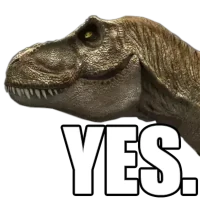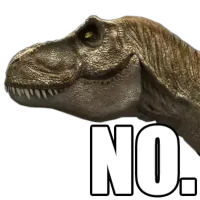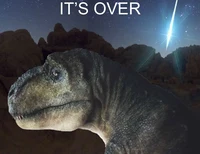The only thing worse than getting punched in the face is getting punched in the face twice. Scientists now say that's almost precisely what happened to the dinosaurs, on a much bigger scale: the asteroid that hit Chicxulub, Mexico, is still credited with killing the dinosaurs. However, a second asteroid hit during that same era at the Nadir crater off the coast of Guinea in western Africa, proving once and for all that nature really had it in for the dinos.
A new study published in Nature shows off the Nadir crater in ways science had not previously seen it. Led by Uisdean Nicholson, a geologist at Heriot-Watt University in Scotland, scientists used 3D seismic data to measure the impact and were able to reverse engineer the size of the asteroid, its angle of impact, how fast it was going and the impact the asteroid had on the seabed and underlying rock.
The asteroid was likely 450 to 500 meters in size, traveling at 20 kilometers per second and hit the Earth at a 20- to 40-degree angle from the northeast, the study says.
"There are around 20 confirmed marine craters worldwide, and none of them has been captured in anything close to this level of detail. It's exquisite," Nicholson told Phys.org. "Craters on the surface are usually heavily eroded and we can only see what is exposed, whereas craters on other planetary bodies usually only show the surface expression. These data allow us to image this fully in three dimensions and peel back the layers of sedimentary rock to look at the crater at all levels."
Among other things, the study proved that the crater was, in fact, the result of an asteroid impact and that it took place around the same time as the asteroid that killed the dinosaurs, which was 66 million years ago at the end of the Cretaceous period. So, while the Chicxulub asteroid was the one that killed the dinosaurs, it seems it may have had a little help from the asteroid that hit the Nadir crater.
Thoughts? Is this true? Did we grow up believing lies?  !dinochads
!dinochads  ?
?  ?
?






 Sir, a second meteor has exterminated the dinosaurs
Sir, a second meteor has exterminated the dinosaurs 


Jump in the discussion.
No email address required.
That's 1/20th of the size of the Chicxulub object. So it would be on the gigatons scale but not an extinction level event like the former.
Jump in the discussion.
No email address required.
Quick, someone put a Gigachad face onto an asteroid hitting Earth (and 'shoop a soyjak face onto earth for good measure!)
Jump in the discussion.
No email address required.
More options
Context
I also linked an actual scientific journal rather than the usual dreg that gets posted. please. I'm doing what I can to elevate the discourse.
please. I'm doing what I can to elevate the discourse.
Jump in the discussion.
No email address required.
!biology !ifrickinglovescience thoughts on dinos and their extinction?

Jump in the discussion.
No email address required.
They turned into delicious nuggets
Jump in the discussion.
No email address required.
More options
Context
More options
Context
More options
Context
Jump in the discussion.
No email address required.
More options
Context
More options
Context